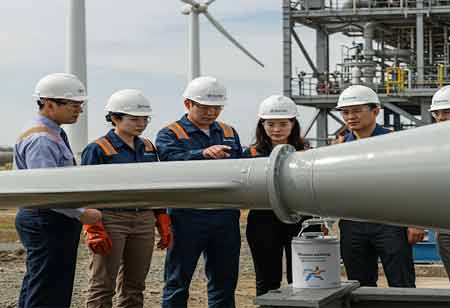Thank you for Subscribing to Construction Business Review Weekly Brief
Specials
- Apartment and Condominium Contractors Canada
- Decking Canada
- Architectural Glass Europe
- MEP APAC
- Construction Saudi Arabia
- German Apartment and Condominium Contractors
- Construction Law APAC
- Outdoor Construction
- Foundation Construction Canada
- MEP Canada
- Kitchen and Bath
- Cold Storage Construction APAC
- Precast Concrete Europe
- Construction Staffing Europe
- Pre-Construction Services
- Flooring System APAC
- Scaffolding Canada
- Swimming Pool Construction Canada
- Construction Management Canada
- Cold Storage Construction Canada
- Flooring Systems Europe
- Residential Construction
- Concrete Canada
- Construction Cladding Europe
- Construction Cladding APAC
- Concretes, Aggregates and Construction Materials APAC
- Concretes, Aggregates and Construction Materials Europe
- Commercial Contractors Europe
- Commercial Contractors APAC
- Dummy
- Construction Insulation, Coating and Waterproofing
- Construction Management APAC
- Landscaping Canada
- Construction Coating Europe
- Construction Tech Startups Europe
- Insulation Services Europe
- Mechanical Contractor Canada
- Mould Remediation and Testing Europe
- Swimming Pool Construction APAC
- Building Sealing Solutions Europe
- Construction Engineering Services
- Mechanical Electrical and Plumbing
- Roofing Systems Europe
- Architectural Glass APAC
- Startups APAC
- Construction Forensic and Owners Representative
- Flooring System
- Waterproofing APAC
- Wall Systems
- Safety and Compliance Europe
- Construction Equipment
- Modular and Prefab Construction
- Architectural Glass
- Construction MENA
- Construction Demolition and Recycling Europe
- Modular Construction Europe
- Construction Interiors
- Steel Building APAC
- HVAC
- Doors and windows
- Modular Construction APAC
- Building Information Modeling APAC
- Sustainable Construction APAC
- Building Restoration and Maintenance
- Commercial Contractors
- Specialty Construction
- Construction Engineering Canada
- Construction Engineering MENA
- Modular Construction Canada
- Construction Demolition Canada
- Roofing and Siding Systems
- Construction Latam
- Construction Staffing
- Roofing Systems APAC
- Construction Consulting
- Steel Building Europe
- Construction Demolition and Recycling APAC
- Safety and Compliance APAC
- Concretes, Aggregates and Construction Materials
- Construction Cladding
Technological Advances Redefining the Construction Industry
Innovative construction technologies are helping large-scale construction projects improve safety

By
Construction Business Review | Wednesday, September 07, 2022
Stay ahead of the industry with exclusive feature stories on the top companies, expert insights and the latest news delivered straight to your inbox. Subscribe today.
From planning projects to ensuring safety, technological innovations are transforming the construction industry. Therefore, by implementing the right equipment and technology, the construction industry will witness a massive progression
FREMONT, CA: Innovative construction technologies are helping large-scale construction projects improve safety, efficiency, and productivity. The construction industry has observed and utilised several advances that are visible in the types of buildings constructed. The sector faced numerous challenges in the post-pandemic period to provide greater protection for workers, resume work, and retain losses. However, the industry must respond to this crisis with a great focus and shift on innovation and further developments like automation and technologies that would transform the construction industry.
Augmented Reality (AR)
Construction professionals can utilise AR capabilities integrated with mobile devices to monitor a job site with additional information laid directly on top of the picture. For instance, a construction worker can point a tablet at a wall that displays the building plans for that wall like they were present in the physical environment. In such a way, AR has huge applications for construction as it renders additional insights accurately whether they are needed.
Some of the advantages of augmented reality include automated measurements, where AR technology facilitates measuring a physical space in real-time to help employers work according to building plans. Visualise modifications is another benefit where AR is used to layer potential project modifications directly onto the working site that helps contractors to visualise potential changes before committing to them. Finally, AR devices also offer safety information by identifying hazards in the environment and showcasing real-time security measures to workers.
Check Out This: Employer of Record Management
Construction Wearables
Due to their safety benefits and enormous advantages for productivity, construction wearables are experiencing rapid adoption in the construction industry. Wearable technology provides the possibility of added safety for workers, potentially preventing injuries, accidents, and deaths across the sector. Smart boots, hard hats, and power gloves are some of the construction wearables leading the industry. Smart boots are powered by walking and detecting workers at risk of collision with nearby construction vehicles equipped with sensors. By sensing brainwaves, smart hard hats identify microsleeps, which cause a risk of injury to employees. Power gloves increase dexterity and strength, aiding in minimising overuse injuries. Other wearables like monitors, smartwatches, and goggles improve lone worker safety, check for fatigue, and allow contact tracing.
Construction Exoskeletons
Exosuits, or construction exoskeletons, are wearable machines enabled with motorised joints that offer additional support and power during repetitive movements such as bending, lifting, and grabbing. They are emerging as a useful tool to reduce injuries and improve efficiency for construction employees.





